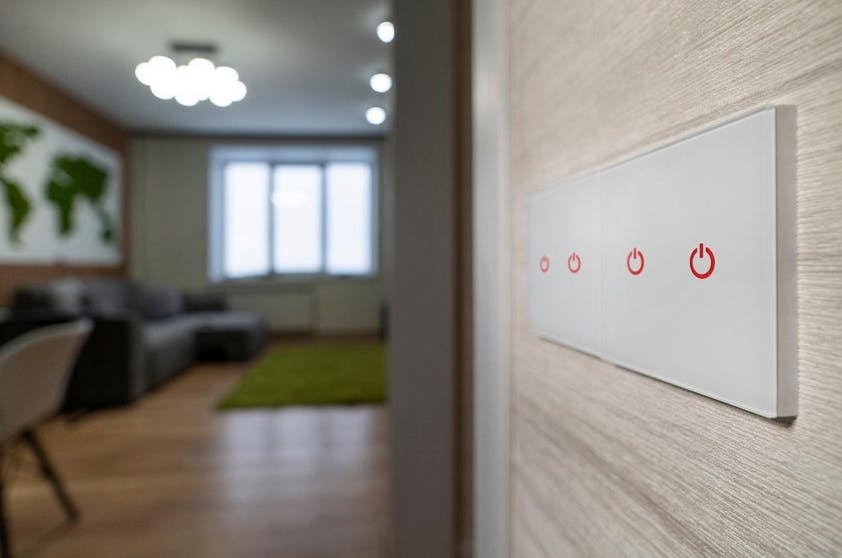This blog has pretty much covered it all when it comes to smart-home technology features. We touched on the topic broadly, when consumers are on a budget, as well as focused on specific aspects, including security systems, lighting, and tech in the kitchen, bathroom and bedroom.
What else is there?
One element of smart-home tech that can affect each of the above subjects is the switch – you know, the ubiquitous dial, button, rocker, slider or toggle that starts or stops electricity to an object or device. These little face-plate-covered “juice” controllers are often taken for granted but essentially help act as a conduit to our home enjoyment.
Switches – whether to turn on or off something or lower or raise power to adjust speed of a ceiling fan or brightness of a light – are critical components to the smarter home. And, yet, we have not covered them solely on this blog – until now.
The smart switch can manage lights, fans, security cameras or many other devices from anywhere in and around the house. Most need a neutral-wire connection because they require active electrical current flowing to the source.
Switches can communicate to a home hub over WiFi or the existing wiring via low-radio frequency. Hubs are the “nerve center” for running your devices and are better known as brands SmartThings via Z-Wave, Zigbee, Wink or Lutron. Installation requires downloading an app associated with the switch and following prompts to connect it to smartphones and/or the home hub.
The beauty of the hub is that it allows households to use a single app to control multiple devices. There are also hub-free services – from Nest and others – that allow single-source control from an app on your phone.
While WiFi may seem like the most attractive option, adding too many devices to a network could cause the speed to slow. Some devices can operate with your phone’s Bluetooth wireless technology without WiFi but keep in mind they must be controlled within close range.
Speak with an expert or read the switch descriptions carefully to determine how it works – with or without a WiFi connection – as well as whether the switch is compatible with the smart-home hub or voice-assist system.
With a little bit of research, I can tell you that my real estate and tech friends like the use of smart switches in their home because they add more value and greater functionality. Two of them recommend the Lutron Caséta smart-home platform as highly compatible with phones as well as many smart devices in the home.
For example, the Caséta ecosystem can function with traditional lights, in-wall dimmers, motion sensors, smart ceiling fan controls, as well as smart shades and blinds. In addition to using its own proprietary wireless standard, the Caséta partners with Amazon Alexa, Apple HomeKit, Google Assistant, Samsung SmartThings and Sonos to be fully compatible.
Other smart-switch models – including GE (also known as GE CYNC), Inovelli, Kasa, and Brilliant Control – offer great interoperability with most home hubs and voice assistants. Just think: A single flip of a switch can turn on the outside lights – front and back or programmed in other combinations.
Smart switches with dimmer functionality allow users to remotely adjust light intensity, offering energy savings by running the lights lower than full illumination. However, not all lights work with smart switches. For example, if a smart bulb features different hues, controlling those colors may not work directly from a smart switch without an additional device or app.
Smart switches are available at most hardware/DIY stores and online and can run about $35-$55 each. They are generally simple add-ons to a home and yet raise your smart-home tech “score” a lot.
Want to learn more about smart switches, check out the DIY Smart Home Guy for his video series that simply – yet smartly – shows many different products on the market today.
==========
I developed a guide called Smart-home Technology: Planning and budgeting for the newest advances in safe living. It’s yours to download free at the website Smart-Homes.Technology.




